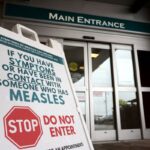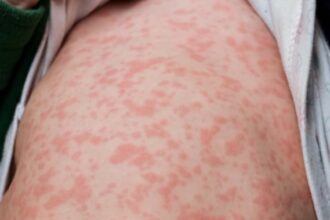In a significant development for rural healthcare access, Southlake Regional Health Centre has expanded its vital cardiac rehabilitation and prevention program to Georgina, addressing a critical gap in specialized care for residents in northern York Region. The satellite program, which commenced operations last month, now offers life-saving cardiac services to patients who previously faced substantial transportation barriers.
“Distance should never determine whether someone receives the care they need after a cardiac event,” said Dr. Marian Powell, Southlake’s cardiac rehabilitation medical director. “The expansion to Georgina represents our commitment to ensuring equitable healthcare access across the region, particularly for our rural communities.”
The program, hosted at the Link in Sutton, operates every Friday and has already begun serving patients in need of cardiac rehabilitation services. This expansion comes as a direct response to transportation challenges that have historically prevented Georgina residents from accessing specialized cardiac care, with many patients previously required to travel significant distances to Newmarket for these essential services.
Data collected by Southlake revealed that nearly 50 percent of Georgina patients referred to cardiac rehabilitation programs never initiated treatment, primarily due to transportation difficulties. This alarming statistic highlights the critical importance of bringing specialized healthcare services directly to underserved communities.
“We saw a clear pattern where distance was becoming a life-threatening barrier,” explained Jane Casey, Southlake’s director of cardiac and diabetes care. “When patients can’t access rehabilitation services, their risk of secondary cardiac events increases dramatically. This new location removes that barrier for many northern York Region residents.”
The cardiac rehabilitation program offers comprehensive services, including personalized exercise regimens, nutritional counseling, medication management, and psychological support—all critical components for recovery following cardiac events such as heart attacks, bypass surgeries, or stent placements. Research consistently demonstrates that proper cardiac rehabilitation can reduce mortality rates by up to 25 percent and significantly decrease hospital readmissions.
Georgina Mayor Margaret Quirk expressed enthusiasm about the program’s arrival, noting that it represents a crucial advancement in local healthcare infrastructure. “This is exactly the kind of healthcare innovation our community needs,” Quirk stated. “Bringing specialized care closer to home means our residents are more likely to complete their rehabilitation programs and achieve better health outcomes.”
The expansion was made possible through collaboration between Southlake Regional Health Centre, the Town of Georgina, and provincial healthcare authorities. The partnership demonstrates how healthcare institutions can effectively extend their reach into rural communities through targeted satellite programs.
For Georgina resident Thomas Harrington, who recently underwent bypass surgery, the local program has been transformative. “After my surgery, I was terrified about how I’d manage the trips to Newmarket for rehab,” Harrington shared. “Having these services right here in Georgina means I haven’t missed a single appointment. It’s not just convenient—it’s potentially life-saving.”
Healthcare experts note that this model of bringing specialized care to rural communities could serve as a template for addressing other healthcare disparities across Canada. As our healthcare system continues to evolve, targeted satellite programs may represent an effective strategy for ensuring equitable access to critical services.
As Canada grapples with an aging population and increasing rates of cardiovascular disease, particularly in rural communities, innovative approaches to care delivery become increasingly vital. The question now becomes: Will this successful model of bringing specialized healthcare services to underserved communities be replicated across other regions facing similar geographical barriers to essential care?























